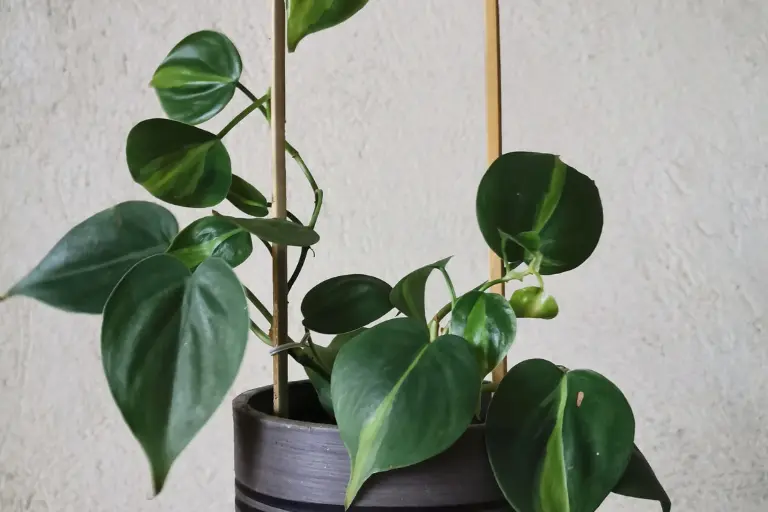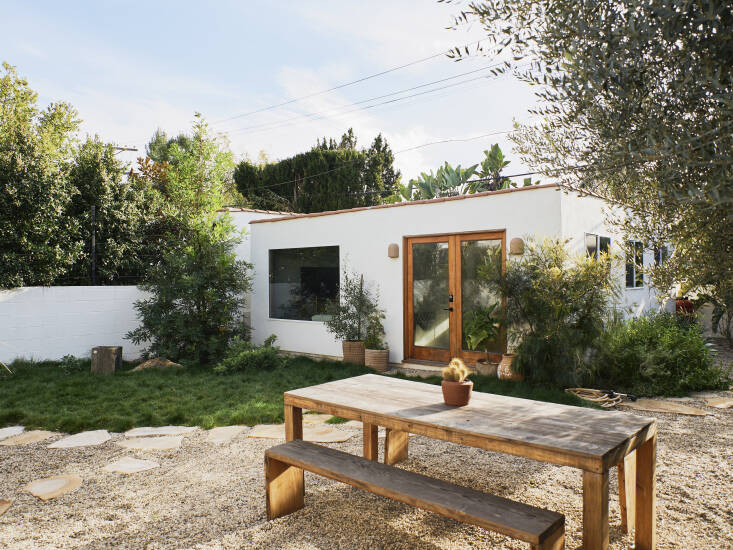Hoyas, commonly known as Wax plants, are day by day more popular. I’ve got an email from many gardeners that they got Hoya because of my guides. And it’s no wonder. They’ll stand out in any place, and just wait till they bloom!
But there’s one often overlooked element when it comes to caring for Hoyas – their natural inclination to climb.
While Hoyas grow in many different ecosystems all around Southeast Asia and Australia, you’ll often find them growing from the branches of trees. They naturally grow as epiphytes.
“Epiphyte is a plant that grows on the surface of another plant.”
There’s no way you can replicate that in your home setting, but you can give them something to climb on – a trellis.
But not all Hoyas are the same. While some varieties love to climb, others prefer to elegantly drape or hang.
If that’s confusing right now, don’t worry. In this article, I’ll break down the reasons why your Hoya might need a trellis, the benefits of providing this support, and most importantly, how to easily make your Hoya climb.
Do all Hoyas Like to Climb?
No, not all Hoyas like to climb. There are two main ways Hoyas grow. Most species send out vines and have a natural tendency to climb. But some prefer to hang, like Hoya Carnosa or Hoya Bella. And there are even some varieties that combine those characteristics and create rich bushes overflowing to all sides.
The inclination of Hoyas to either climb or hang is influenced by their natural habitats and evolutionary adaptations. In their native environments, they have developed distinct growth habits based on the conditions they face.
The climbing varieties usually originate from forests where sunlight is scarce. So they adapted to access sunlight between the trees by climbing up high.
On the other hand, Hoyas, like Hoya Carnosa or other hanging varieties, are found in regions where they trail over rocks and cliffs.
But that doesn’t mean that you can’t have a hanging hoya climbing or vining hoya hanging. Some Hoyas will naturally start climbing up, but as they grow, their leaves start to become heavier and larger and will eventually hang down.
Can Hoyas Grow in Hanging Baskets?
Hanging baskets can be an ideal choice for certain Hoya varieties, especially those with trailing leaves. It allows their vines to elegantly spill over the sides.
Additionally, hanging baskets provide excellent aeration, allowing the roots and stems to breathe and preventing waterlogged soil.
These pots can also be used for climbing Hoyas, just make sure you have enough room on top for the plant to grow.
Lastly, don’t forget that even in a hanging basket, the plant needs enough sunlight. Choose a location with bright, indirect sunlight.
The keyword “indirect” is very important. Usually, many apartments are situated to receive as much sunlight as possible, and the light usually comes from the top and diffuses downwards. So, be very careful about the placement of your pot.
Benefits of Getting a Trellis for your Hoya

Getting your Hoyas a trellis offers a multitude of benefits that extend beyond mere aesthetics. The strategic use of trellis not only enhances the visual appeal of your plant but also promotes its well-being and vitality.
1. Structural Support
A trellis will give your Hoya structural support.
Hoyas, with their long and often heavy vines, struggle to maintain an upright posture without external assistance. Trellis provides the necessary framework.
It also helps in one more direction. When left on its own, Hoyas will often become tangled with vines growing in all directions. This can also restrict the plants’ growth, as the lower parts often don’t get enough sunlight. Trellis will give your Hoya a structure.
2. Disease and Pest Prevention
As mentioned in the first point, a trellis will give your plant more structure. This will also improve the airflow between the vines and leaves, reducing humidity and preventing diseases and pests.
This is especially important because pests are often attracted to sap-rich plants like Hoyas.
3. Helps Control the Size of your Hoya
A trellis can also help you control the size of your Hoya. Without support, the veins will grow in all directions without any order. So, it can easily happen that your plant will have empty spots on one or multiple sides. A trellis can help you control that. It is essentially telling your plant where to grow.
4. Aesthetically Pleasing
Trellises come in many different shapes and from many different materials. You can pick and choose the one that fits the best into your place.
I especially like trellises made from wood or with a bronze finish. Not to mention that having your Hoya grow in a heart shape is absolutely adorable!
How to Make Hoya Climb on a Trellis
Encouraging your Hoya to climb can seem challenging at first, but it is actually very easy. Once it attaches itself, the sky is the limit.
You’ll need an appropriate trellis that suits the size and growth pattern of your Hoya. The growth pattern is not that important to examine but is better to get your Hoya wide trellis if it is spreading wide or narrower if you want to see more upward growth. Then, we’ll simply pin the vine in a few places to ensure its stability.
1. Choose the Right Trellis
The first step, as I indicated, is choosing the right trellis. The size of it is somewhat important, but the most important factor is, of course, the look of it.
Whether it’s a wooden trellis, moss pole, or metal frame, the choice is yours. But make sure it’s sturdy to prevent accidents as your Hoya grows.
What’s the Best Trellis for Hoyas?
For Hoyas, I’d recommend getting a trellis with rounded edges – different sizes of U-shaped trellis, a heart-shaped one is also great.
Trellises with sharper edges are also alright, but be careful when vining the plant up.
Using just a moss or bamboo pole is also an option, but Hoyas are vining plants, and a simple pole may not support it well.
2. Loop the Vine
Anchor the trellis into the soil and carefully loop the vine around it. Always make sure you are doing it counterclockwise. That’s their natural way of vining.
Do not pull it too tight, or you are risking a snap. Don’t forget to clip your Hoya in place as you go around. This will prevent damage and help the plant stay properly in place.
3. Pin the Node
Once your Hoya has done its loop, pin the remaining piece to the bottom of the pot.
If the vine is not long enough to reach the soil, on the other hand, pin the end to the trellis. Make sure it is pointed in the right direction where you want the growth to continue.
If you have just a moss pole as your structure, consider supporting the end with another shorter stick to keep the vine up.
Don’t forget to check up on your Hoya and move the vines as needed if it’s not vining as expected.
When should you Start Hoya on a Trellis?
It is best if you can give your Hoya something to climb on early on when the plant is still young. Once it has established a root system, it will start actively producing new growth. And that’s the ideal time to put a trellis into a pot.
Hoyas are not fast growers, but even if you can’t see any new growth, the plant is learning about its environment. When the plant knows there’s a structure it can grow on, it will set accordingly. For instance, the leaves will grow facing up.
Before you go…
Apart from being beautiful, Hoyas have one other superpower. They can also purify air and are quite good at it (at least compared to other plants). You may want to check out my analysis of available research in that manner…
Does Hoya Really Purify Air? This is What Research Says




